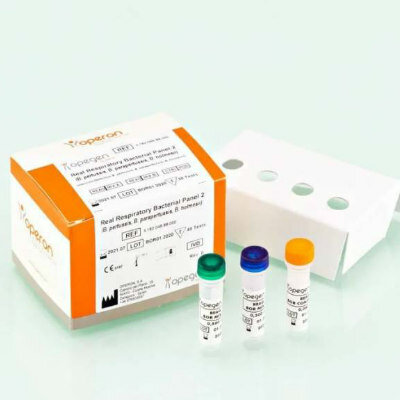Molecule-Based System Rids Cells of Unwanted RNAs
|
By LabMedica International staff writers Posted on 12 Jun 2018 |
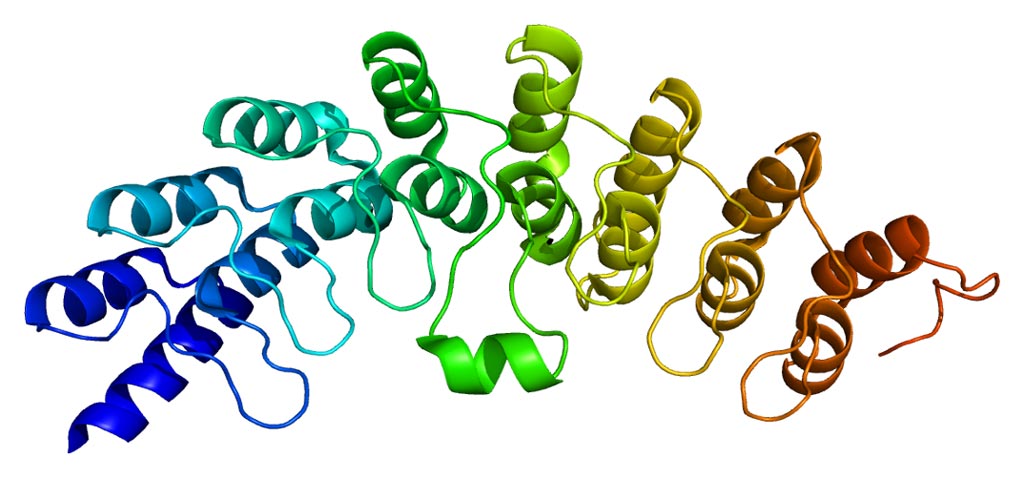
Image: The structure of the RNase L enzyme (Photo courtesy of Wikimedia Commons).
Researchers seeking ways to modify gene expression have developed a small-molecule-based tool that can recruit a nuclease to a specific gene transcript, triggering its destruction.
The balance between synthesis of RNA and its degradation is a key determinant in the life of a cell. Engineered systems such as the CRISPR/Cas9 gene editor have been adapted to rid a cell of RNAs.
In a new approach for manipulating the cellular RNA population, investigators at the Scripps Research Institute (Jupiter, FL, USA) attached a small molecule (Targaprimir-96), which selectively binds the oncogenic microRNA (miR)-96 hairpin precursor, to a short 2′-5′ poly(A) oligonucleotide.
The investigators reported in the May 24, 2018, online edition of the Journal of the American Chemical Society that the conjugated molecule locally activated the endogenous enzyme RNase L (latent ribonuclease), which selectively cleaved the miR-96 precursor in cancer cells in a catalytic and sub-stoichiometric fashion.
Silencing miR-96 activated the pro-apoptotic FOXO1 transcription factor, triggering apoptosis in breast cancer, but not healthy breast, cells. These results demonstrated that small molecules could be programmed to selectively cleave RNA via nuclease recruitment with broad implications for drug development.
“Since it is now known that RNA is a key driver in nearly every disease, optimization of this approach that turns a cell’s natural defenses toward destroying disease-causing RNAs is likely broadly applicable. We will be laser-focused on diseases for which there are no known cure and have a poor prognosis, such as hard-to-treat cancers and incurable human genetic disease,” said senior author Dr. Matthew D. Disney, chemistry team leader at the Scripps Research Institute. “I am excited to see where we and others ultimately take this.”
“These studies, like much science, were about a decade in the making. We are very excited to see how this initial application evolves,” said Dr. Disney. “This research further shows that RNA is indeed a viable target to make medicines. I believe this is just the tip of the iceberg of how this approach will ultimately be applied.”
Related Links:
Scripps Research Institute
The balance between synthesis of RNA and its degradation is a key determinant in the life of a cell. Engineered systems such as the CRISPR/Cas9 gene editor have been adapted to rid a cell of RNAs.
In a new approach for manipulating the cellular RNA population, investigators at the Scripps Research Institute (Jupiter, FL, USA) attached a small molecule (Targaprimir-96), which selectively binds the oncogenic microRNA (miR)-96 hairpin precursor, to a short 2′-5′ poly(A) oligonucleotide.
The investigators reported in the May 24, 2018, online edition of the Journal of the American Chemical Society that the conjugated molecule locally activated the endogenous enzyme RNase L (latent ribonuclease), which selectively cleaved the miR-96 precursor in cancer cells in a catalytic and sub-stoichiometric fashion.
Silencing miR-96 activated the pro-apoptotic FOXO1 transcription factor, triggering apoptosis in breast cancer, but not healthy breast, cells. These results demonstrated that small molecules could be programmed to selectively cleave RNA via nuclease recruitment with broad implications for drug development.
“Since it is now known that RNA is a key driver in nearly every disease, optimization of this approach that turns a cell’s natural defenses toward destroying disease-causing RNAs is likely broadly applicable. We will be laser-focused on diseases for which there are no known cure and have a poor prognosis, such as hard-to-treat cancers and incurable human genetic disease,” said senior author Dr. Matthew D. Disney, chemistry team leader at the Scripps Research Institute. “I am excited to see where we and others ultimately take this.”
“These studies, like much science, were about a decade in the making. We are very excited to see how this initial application evolves,” said Dr. Disney. “This research further shows that RNA is indeed a viable target to make medicines. I believe this is just the tip of the iceberg of how this approach will ultimately be applied.”
Related Links:
Scripps Research Institute
Latest BioResearch News
- Genome Analysis Predicts Likelihood of Neurodisability in Oxygen-Deprived Newborns
- Gene Panel Predicts Disease Progession for Patients with B-cell Lymphoma
- New Method Simplifies Preparation of Tumor Genomic DNA Libraries
- New Tool Developed for Diagnosis of Chronic HBV Infection
- Panel of Genetic Loci Accurately Predicts Risk of Developing Gout
- Disrupted TGFB Signaling Linked to Increased Cancer-Related Bacteria
- Gene Fusion Protein Proposed as Prostate Cancer Biomarker
- NIV Test to Diagnose and Monitor Vascular Complications in Diabetes
- Semen Exosome MicroRNA Proves Biomarker for Prostate Cancer
- Genetic Loci Link Plasma Lipid Levels to CVD Risk
- Newly Identified Gene Network Aids in Early Diagnosis of Autism Spectrum Disorder
- Link Confirmed between Living in Poverty and Developing Diseases
- Genomic Study Identifies Kidney Disease Loci in Type I Diabetes Patients
- Liquid Biopsy More Effective for Analyzing Tumor Drug Resistance Mutations
- New Liquid Biopsy Assay Reveals Host-Pathogen Interactions
- Method Developed for Enriching Trophoblast Population in Samples
Channels
Clinical Chemistry
view channel
‘Brilliantly Luminous’ Nanoscale Chemical Tool to Improve Disease Detection
Thousands of commercially available glowing molecules known as fluorophores are commonly used in medical imaging, disease detection, biomarker tagging, and chemical analysis. They are also integral in... Read more
Low-Cost Portable Screening Test to Transform Kidney Disease Detection
Millions of individuals suffer from kidney disease, which often remains undiagnosed until it has reached a critical stage. This silent epidemic not only diminishes the quality of life for those affected... Read more
New Method Uses Pulsed Infrared Light to Find Cancer's 'Fingerprints' In Blood Plasma
Cancer diagnoses have traditionally relied on invasive or time-consuming procedures like tissue biopsies. Now, new research published in ACS Central Science introduces a method that utilizes pulsed infrared... Read moreMolecular Diagnostics
view channel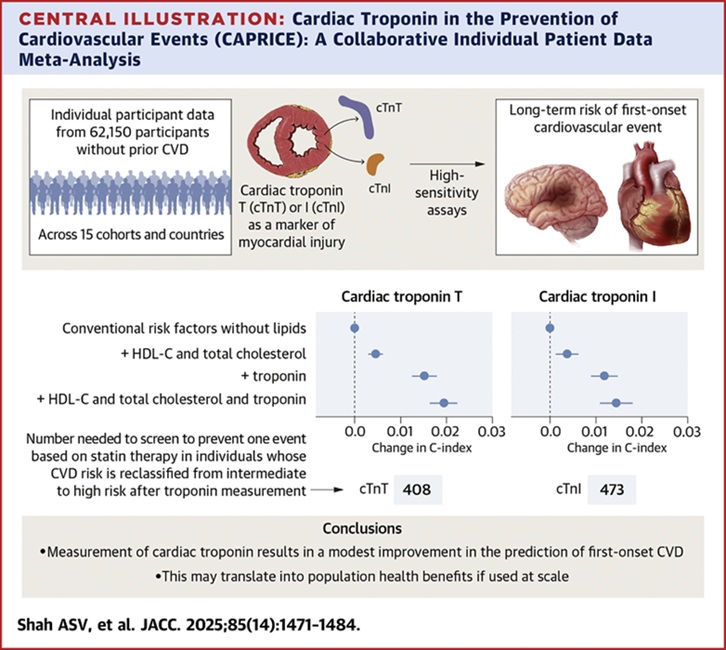
Simple Blood Test Improves Heart Attack and Stroke Risk Prediction
Troponin is a protein found in heart muscle cells that is released into the bloodstream when the heart is damaged. High-sensitivity troponin blood tests are commonly used in hospitals to diagnose heart... Read more
Blood Biomarker Test Could Detect Genetic Predisposition to Alzheimer’s
New medications for Alzheimer’s disease, the most common form of dementia, are now becoming available. These treatments, known as “amyloid antibodies,” work by promoting the removal of small deposits from... Read more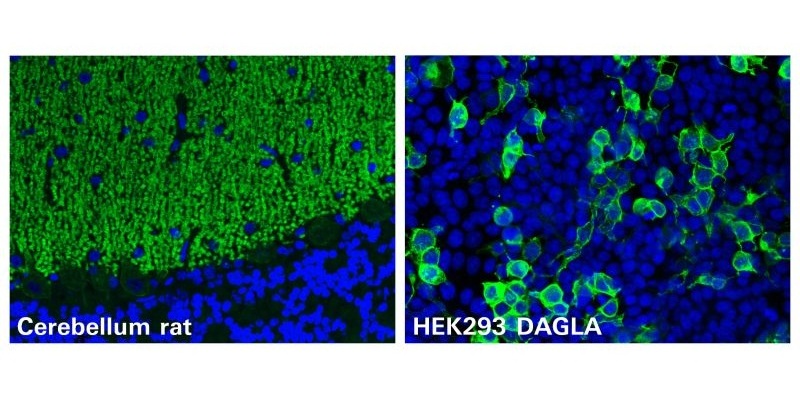
Novel Autoantibody Against DAGLA Discovered in Cerebellitis
Autoimmune cerebellar ataxias are strongly disabling disorders characterized by an impaired ability to coordinate muscle movement. Cerebellar autoantibodies serve as useful biomarkers to support rapid... Read more
Gene-Based Blood Test Accurately Predicts Tumor Recurrence of Advanced Skin Cancer
Melanoma, an aggressive form of skin cancer, becomes extremely difficult to treat once it spreads to other parts of the body. For patients with metastatic melanoma tumors that cannot be surgically removed... Read moreHematology
view channel
New Scoring System Predicts Risk of Developing Cancer from Common Blood Disorder
Clonal cytopenia of undetermined significance (CCUS) is a blood disorder commonly found in older adults, characterized by mutations in blood cells and a low blood count, but without any obvious cause or... Read more
Non-Invasive Prenatal Test for Fetal RhD Status Demonstrates 100% Accuracy
In the United States, approximately 15% of pregnant individuals are RhD-negative. However, in about 40% of these cases, the fetus is also RhD-negative, making the administration of RhoGAM unnecessary.... Read moreImmunology
view channel
Stem Cell Test Predicts Treatment Outcome for Patients with Platinum-Resistant Ovarian Cancer
Epithelial ovarian cancer frequently responds to chemotherapy initially, but eventually, the tumor develops resistance to the therapy, leading to regrowth. This resistance is partially due to the activation... Read more
Machine Learning-Enabled Blood Test Predicts Immunotherapy Response in Lymphoma Patients
Chimeric antigen receptor (CAR) T-cell therapy has emerged as one of the most promising recent developments in the treatment of blood cancers. However, over half of non-Hodgkin lymphoma (NHL) patients... Read moreMicrobiology
view channel
Handheld Device Delivers Low-Cost TB Results in Less Than One Hour
Tuberculosis (TB) remains the deadliest infectious disease globally, affecting an estimated 10 million people annually. In 2021, about 4.2 million TB cases went undiagnosed or unreported, mainly due to... Read more
New AI-Based Method Improves Diagnosis of Drug-Resistant Infections
Drug-resistant infections, particularly those caused by deadly bacteria like tuberculosis and staphylococcus, are rapidly emerging as a global health emergency. These infections are more difficult to treat,... Read more
Breakthrough Diagnostic Technology Identifies Bacterial Infections with Almost 100% Accuracy within Three Hours
Rapid and precise identification of pathogenic microbes in patient samples is essential for the effective treatment of acute infectious diseases, such as sepsis. The fluorescence in situ hybridization... Read morePathology
view channel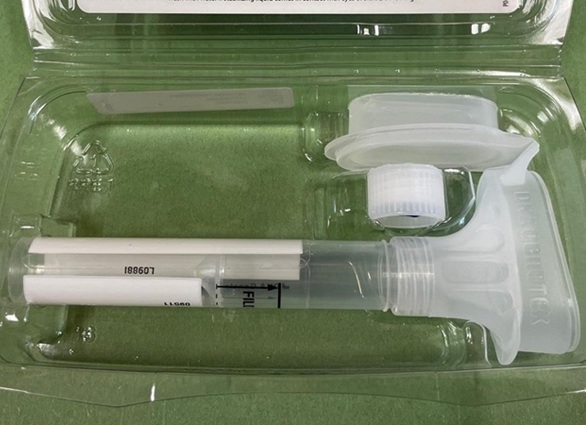
Spit Test More Accurate at Identifying Future Prostate Cancer Risk
Currently, blood tests that measure the level of a protein called prostate-specific antigen (PSA) are commonly used to identify men at higher risk for prostate cancer. This test is typically used based... Read moreDNA Nanotechnology Boosts Sensitivity of Test Strips
Since the Covid-19 pandemic, most people have become familiar with paper-based rapid test strips, also known as lateral flow immunoassays (LFIAs). These tests are used to quickly detect biomarkers that... Read more
Novel UV and Machine Learning-Aided Method Detects Microbial Contamination in Cell Cultures
Cell therapy holds great potential in treating diseases such as cancers, inflammatory conditions, and chronic degenerative disorders by manipulating or replacing cells to restore function or combat disease.... Read moreTechnology
view channel
Disposable Microchip Technology Could Selectively Detect HIV in Whole Blood Samples
As of the end of 2023, approximately 40 million people globally were living with HIV, and around 630,000 individuals died from AIDS-related illnesses that same year. Despite a substantial decline in deaths... Read more
Pain-On-A-Chip Microfluidic Device Determines Types of Chronic Pain from Blood Samples
Chronic pain is a widespread condition that remains difficult to manage, and existing clinical methods for its treatment rely largely on self-reporting, which can be subjective and especially problematic... Read more
Innovative, Label-Free Ratiometric Fluorosensor Enables More Sensitive Viral RNA Detection
Viruses present a major global health risk, as demonstrated by recent pandemics, making early detection and identification essential for preventing new outbreaks. While traditional detection methods are... Read moreIndustry
view channel
Cepheid and Oxford Nanopore Technologies Partner on Advancing Automated Sequencing-Based Solutions
Cepheid (Sunnyvale, CA, USA), a leading molecular diagnostics company, and Oxford Nanopore Technologies (Oxford, UK), the company behind a new generation of sequencing-based molecular analysis technologies,... Read more
Grifols and Tecan’s IBL Collaborate on Advanced Biomarker Panels
Grifols (Barcelona, Spain), one of the world’s leading producers of plasma-derived medicines and innovative diagnostic solutions, is expanding its offer in clinical diagnostics through a strategic partnership... Read more







